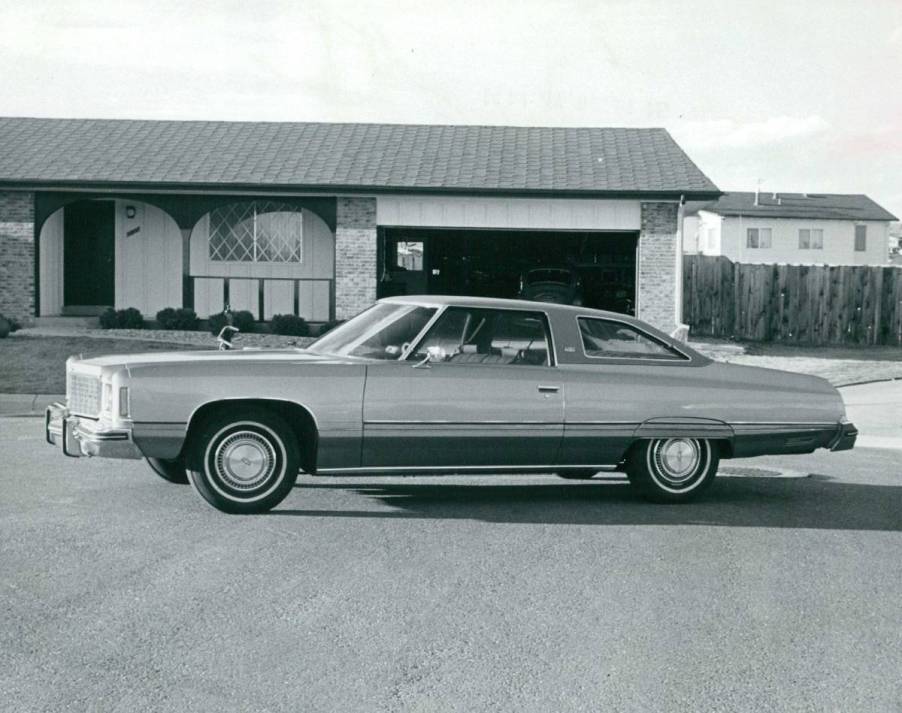
The Chevy Caprice Evolved a Shocking Amount During Its Lifetime
Throughout its life, the Caprice was the most expensive and luxurious model in the Chevrolet full-size car range, which during its lifetime also included the Biscayne, Bel Air, and Impala. Its discontinuation without replacement after the 1996 model year would leave the Ford Crown Victoria, and its cousins the Mercury Grand Marquis and Lincoln Town Car, as the only traditional full-size American sedans.
From its inception as a full-size luxury sedan to its evolution as a law enforcement favorite, the Caprice has left an indelible mark on the automotive industry. In this article, we will explore the history of the Chevy Caprice, look at its evolutionary journey, and examine the factors that led to its eventual discontinuation.
Chevy Caprice: origins and early years
According to Car Directory, in response to the popular Ford LTD series, the Caprice debuted in mid-1965 as a premium trim package for the Impala four-door hardtop sedan. A stronger suspension, higher-grade fabric and vinyl seat and door trim, thicker and higher-grade carpeting, walnut trim on the dashboard and door panels, door pull straps, more convenience lighting, unique complete wheel coverings, and an optional vinyl top were all included.
Bob Lund (Chevrolet’s General Sales Manager) named the Chevrolet Caprice after a posh restaurant he attended in New York City. According to some, the Caprice was named after Caprice Chapman, the daughter of auto executive and important Indy-car official James P. Chapman.
Evolution through the generations
Over the years, the Chevy Caprice has went through several redesigns and updates, adapting to changing market trends and consumer preferences. Let’s take a closer look at some of its notable generations:
- First Generation (1965-1970): The first ever Caprice offered a distinctive design with a prominent grille and refined body lines. For 1966, the Caprice was expanded into a full top-line series that also included a two-door hardtop with a squared-off formal roofline and a station wagon with simulated wood exterior trim – the first Chevy “Woody” wagon since 1954. Every Caprice had a V8 engine, which offered ample performance for its time.
- Second Generation (1971-1976): The second iteration of the Caprice featured a more streamlined appearance, with a larger body and improved aerodynamics. This generation emphasized comfort and luxury, boasting enhanced interior features and a smooth ride.
- Third Generation (1977-1990): The ’70s and OPEC ushered in a new era for the Caprice, marked by a downsizing trend in response to increasing fuel efficiency concerns. Despite its smaller dimensions, this generation retained its luxurious appeal while incorporating modern amenities.
- Fourth Generation (1991-1993): The Caprice underwent a major redesign in the early ’90s, adopting a more angular and contemporary appearance and it was awarded the Motor Trend Car of the Year award when it was introduced.
- Fifth Generation (1994-1996): In 1994, the Caprice received the new-generation GM engines, including an optional detuned version of the Corvette’s LT1 350 5.7-liter engine that produced 260 hp and 330 lb-ft of torque. The LT1 was standard in the 9C1 police package and the wagon. This version offered robust performance, durability, and specific modifications to meet law enforcement requirements.
Reasons for the discontinuation of the Chevy Caprice
After the fifth generation, Chevy decided to discontinue the Caprice in the United States for various reasons:
- Shifting Market Preferences: The market demand gradually shifted towards smaller, more fuel-efficient vehicles and crossover SUVs. Consumers began favoring these alternatives, leading to a decline in sales for full-size sedans like the Caprice.
- Changing Priorities and Brand Strategy: General Motors, Chevy’s parent company, decided to reallocate resources and focus on other models that aligned better with their long-term brand strategy. This involved investing in electric vehicles and prioritizing the development of SUVs and trucks.
- Competitive Landscape: The Caprice faced tough competition from both domestic and foreign automakers. This intensified pressure on Chevrolet to streamline its lineup and allocate resources more effectively.
- Rising Production Costs: Manufacturing and maintaining a full-size sedan like the Caprice became increasingly expensive due to stringent emission and safety regulations. As a result, discontinuing the model was seen as a strategic business decision. In fact, the plant located in Arlington, Texas that housed the production of the Cadillac Fleetwood, the Caprice sedan and wagon, the Buick Roadmaster sedan and wagon, and the Oldsmobile Custom Cruiser wagon shifted its product line to the GMC Denali and Yukon, the Chevrolet Tahoe and Suburban, and the more profitable Cadillac Escalade and Escalade EXT.
According to GM Authority, in 2009, GM decided to get back in the game and came out with the Caprice PPV that was sold as fleet vehicles in the U.S. and Canada. However, in 2017, the GM-Holden Elizabeth plant that produced the vehicle was shut down and that was the end of the Caprice.


